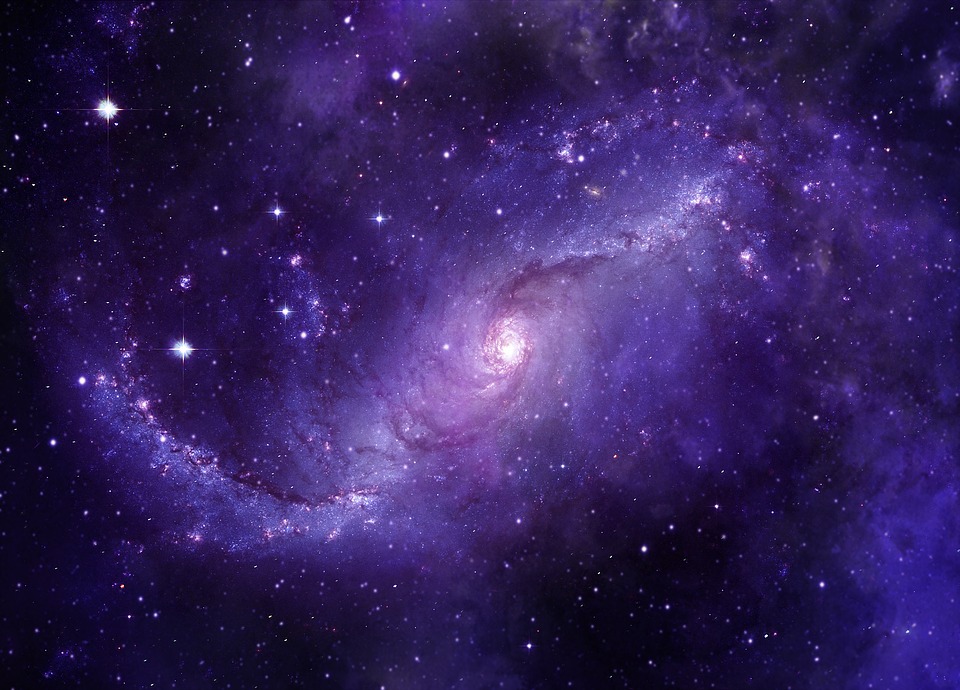NASA and the European Space Agency’s Hubble Space Telescope is currently roaming through space, photographing the phenomena that occur. In one of its latest sightings, the US space agency released a photo taken by the Hubble of two galaxies merging.
Merging galaxies are a common occurrence in the universe, and the Hubble managed to spot the result of a galaxy collision in NGC 1614, which was first discovered back in 1885. NGC 1614 is found 200 million light-years away from Earth, and the agencies have described the shape of this galaxy as eccentric, similar in shape to that of a tadpole, with a tail made of an elongated stream of gas and stars.
“NGC 1614 was the result of an active galactic merger, which creates its peculiar appearance, including a tidal tail. The cosmic collision also drives a turbulent flow of interstellar gas from the smaller of the two galaxies involved into the nucleus of the larger one, resulting in a burst of star formation that started in the core and has slowly spread outward through the galaxy,” said the ESA.
According to astronomers, our very own Milky Way galaxy is also on its way to meet the same fate when it collides with the Andromeda galaxy. When our two galaxies collide, there is a big chance that our Sun would wind up in a new region of space. This collision is not going to happen any time soon as it will take around four billion years for the two galaxies to merge. It should also be noted that once this merge happens, life on Earth at the time will remain unaffected.
Speaking of the Milky Way, scientists at the Max Planck Institute discovered a distant galaxy with some experts claiming that it looks similar to our own home galaxy. The distant galaxy, referred to as SPT0418-47 is found 12 billion light-years away from Earth. Astronomers also found that this particular galaxy is not chaotic, which is in contrast to the theory that galaxies are usually turbulent or unstable.
While SPT0418-47 does not have the characteristic spiral arms, it does have two other parts that could also be found in our Milky Way, which is a bulge and a rotating disc.



 Astronomers have discovered another puzzling interstellar object − this third one is big, bright and fast
Astronomers have discovered another puzzling interstellar object − this third one is big, bright and fast  Cogent Biosciences Soars 120% on Breakthrough Phase 3 Results for Bezuclastinib in GIST Treatment
Cogent Biosciences Soars 120% on Breakthrough Phase 3 Results for Bezuclastinib in GIST Treatment  FDA Lifts REMS Requirement for CAR-T Cell Cancer Therapies
FDA Lifts REMS Requirement for CAR-T Cell Cancer Therapies  Trump Administration to Launch Autism Initiatives Targeting Acetaminophen Use and New Treatment Options
Trump Administration to Launch Autism Initiatives Targeting Acetaminophen Use and New Treatment Options  NASA Partners with Katalyst to Save Swift Observatory with Innovative Docking Mission
NASA Partners with Katalyst to Save Swift Observatory with Innovative Docking Mission  SpaceX’s Starship Completes 11th Test Flight, Paving Way for Moon and Mars Missions
SpaceX’s Starship Completes 11th Test Flight, Paving Way for Moon and Mars Missions  Neuren Pharmaceuticals Surges on U.S. Patent Win for Rare Disorder Drug
Neuren Pharmaceuticals Surges on U.S. Patent Win for Rare Disorder Drug  Eli Lilly’s Inluriyo Gains FDA Approval for Advanced Breast Cancer Treatment
Eli Lilly’s Inluriyo Gains FDA Approval for Advanced Breast Cancer Treatment  Tabletop particle accelerator could transform medicine and materials science
Tabletop particle accelerator could transform medicine and materials science  SpaceX Starship Test Flight Reaches New Heights but Ends in Setback
SpaceX Starship Test Flight Reaches New Heights but Ends in Setback  Neuralink Expands Brain Implant Trials with 12 Global Patients
Neuralink Expands Brain Implant Trials with 12 Global Patients  Lost in space: MethaneSat failed just as NZ was to take over mission control – here’s what we need to know now
Lost in space: MethaneSat failed just as NZ was to take over mission control – here’s what we need to know now  Lab-grown meat: you may find it icky, but it could drive forward medical research
Lab-grown meat: you may find it icky, but it could drive forward medical research  Blue Origin’s New Glenn Achieves Breakthrough Success With First NASA Mission
Blue Origin’s New Glenn Achieves Breakthrough Success With First NASA Mission  NASA Astronauts Wilmore and Williams Recover After Boeing Starliner Delay
NASA Astronauts Wilmore and Williams Recover After Boeing Starliner Delay  CDC Vaccine Review Sparks Controversy Over Thimerosal Study Citation
CDC Vaccine Review Sparks Controversy Over Thimerosal Study Citation 































